Picture this: a chilly Baguio morning during a retreat back in college, where the scent of pine trees mingles with the sweet aroma of fresh strawberries. That's where I first learned this three-ingredient jam recipe from Manang Rosa, who ran the retreat house kitchen.
She taught me that the best strawberry jam doesn't need fancy ingredients or complicated techniques, just fresh Baguio strawberries, sugar, and a splash of lemon juice. What makes this recipe special is how it keeps the strawberries chunky, just like the local jams sold at the Baguio market.
You don't need to trek to Baguio to recreate this - though if you can get your hands on Baguio strawberries, even better.
Jump to:
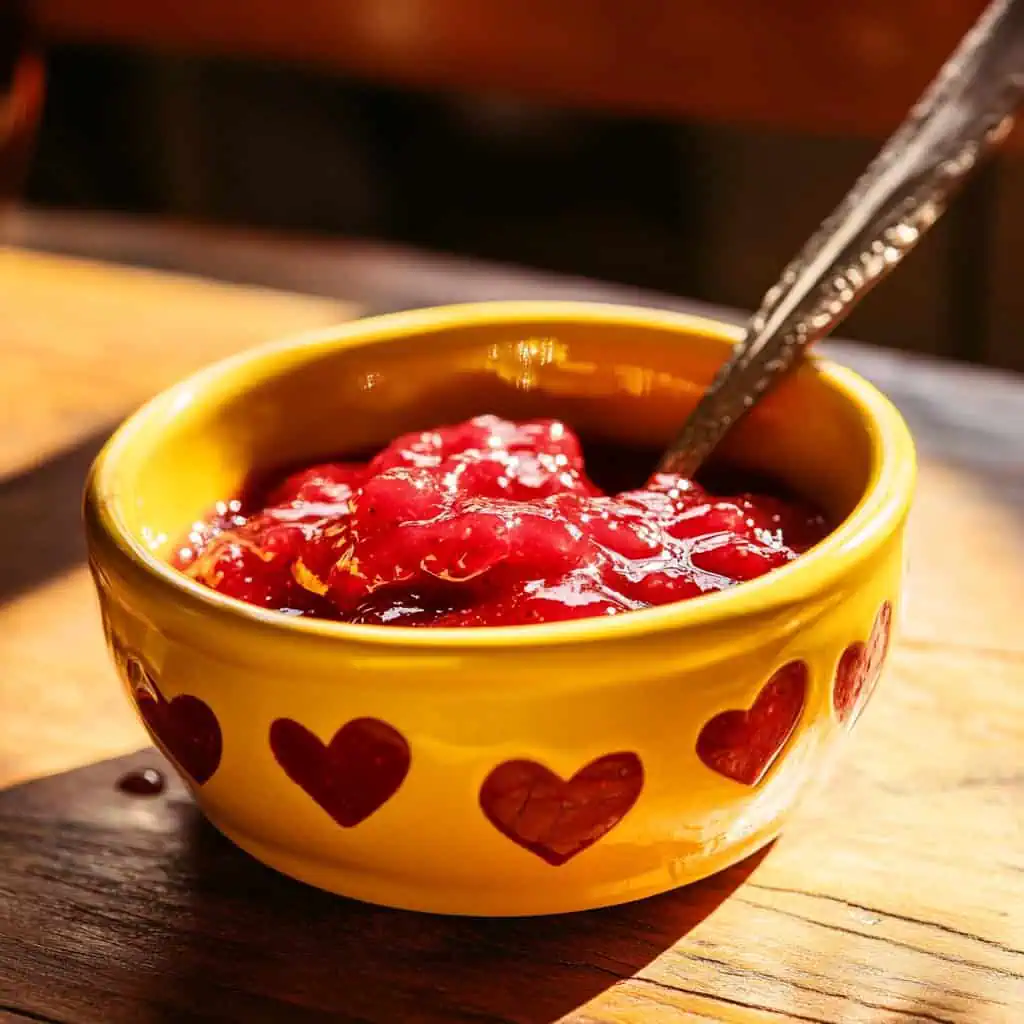
Why You'll Love This Recipe
- Authentic chunky texture reminiscent of Baguio's famous strawberry preserves
- Only 3 simple ingredients needed
- No artificial preservatives or pectin required
- Perfect balance of sweetness and natural strawberry flavor
- Ideal partner for hot pandesal (mainit na pandesal)
- Makes thoughtful homemade gifts
- Can be made in bigger batches for storage
Ingredients
This simple trio creates magic in your jam pot. Fresh strawberries provide the vibrant flavor and natural pectin, especially when slightly underripe berries are included. Sugar not only sweetens but acts as a preservative and helps achieve the perfect jammy consistency.
Lemon juice adds brightness, balances sweetness, and contains acid that activates the pectin in strawberries, helping your jam set naturally without commercial additives.
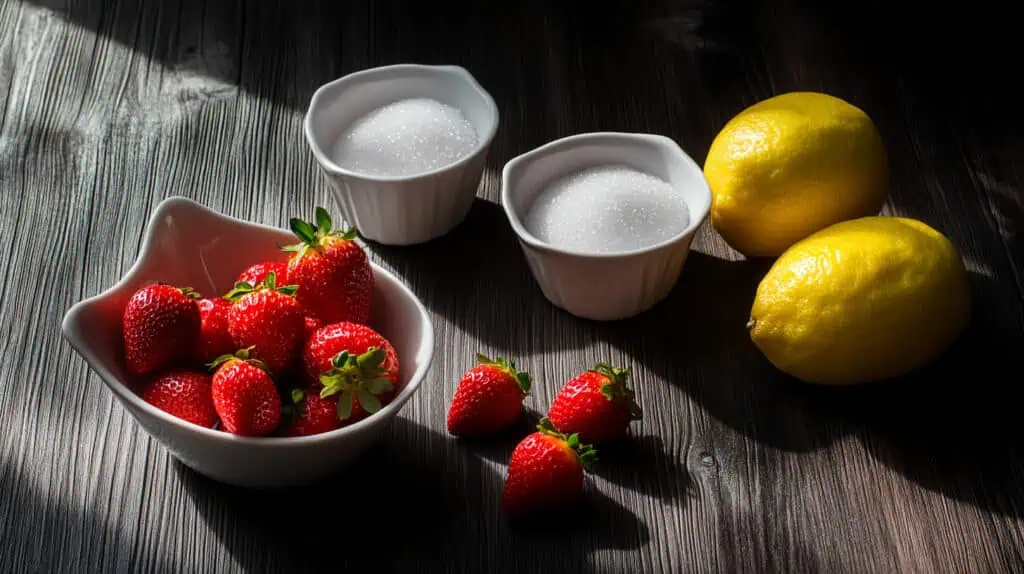
- 1½ kg fresh strawberries, tops removed
- 4 cups white sugar
- ⅓ cup lemon juice
Equipment
- Large mixing bowl - For preparing and macerating the strawberries with sugar
- Heavy-bottomed saucepan - Ensures even heat distribution to prevent scorching
- Wooden spoon - Perfect for gentle stirring without damaging the fruit chunks
- Potato masher (optional) - Helps crush some of the strawberries while leaving others whole
- Mason jars with lids - For storing your finished jam
- Canning funnel (optional) - Makes transferring hot jam to jars cleaner and safer
- Kitchen thermometer (optional) - Helps achieve the perfect setting temperature (105°C/220°F)
- Small plate - For the wrinkle test to check if your jam is ready
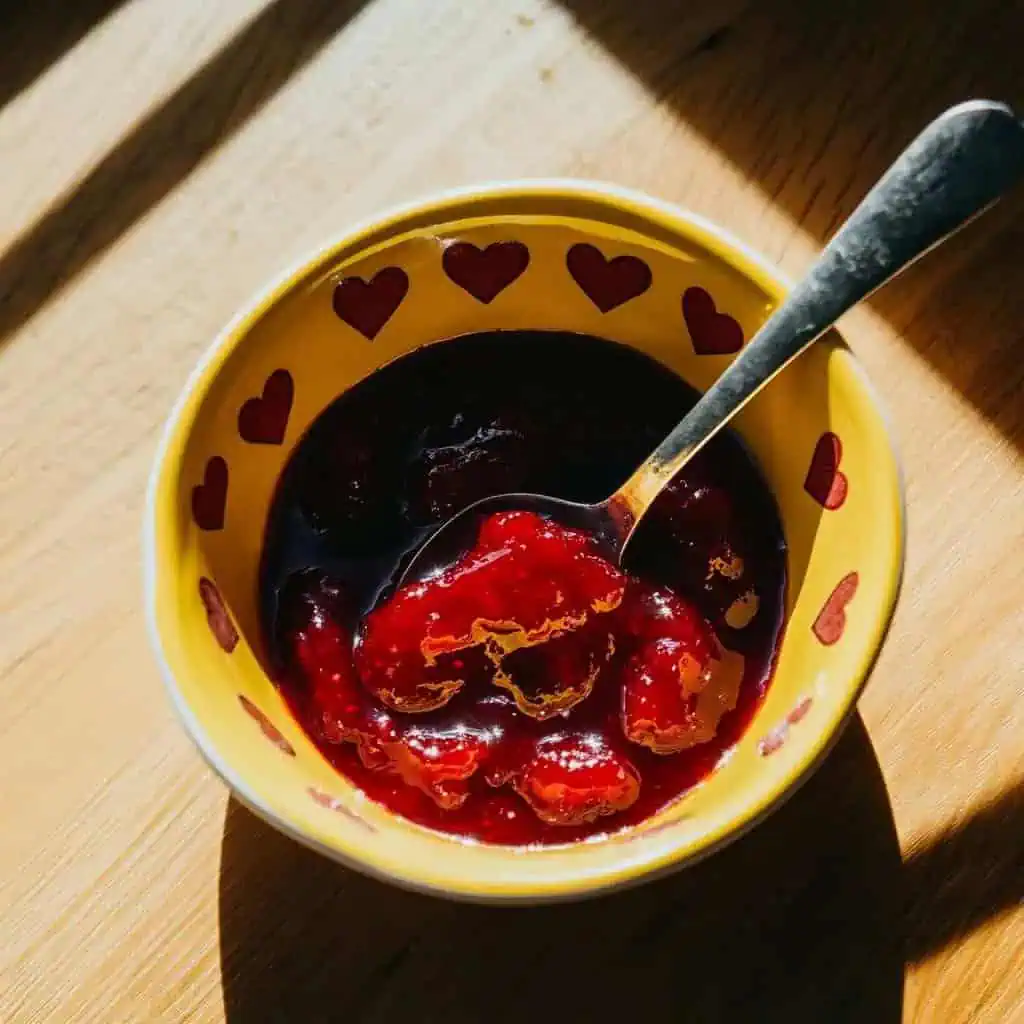
How To Make
- Prepare your jars: Wash and sterilize your jars and lids in hot soapy water, then place them in the oven at 160°C (320°F) for 10 minutes and let them cool on clean kitchen towels.
- Prepare the strawberries: Clean your strawberries thoroughly under cool running water. Remove the green tops and set aside ½ kg of the nicest whole strawberries for later - this will give your jam that signature chunky texture.
- Mix ingredients: In a large mixing bowl, combine your sugar, lemon juice, and the remaining 1 kg of strawberries. Using clean hands or a potato masher, gently crush these strawberries until they release their juices, but don't mash them completely - you still want some texture.
- Combine all berries: Now add your reserved whole strawberries to the bowl and mix everything together gently. Transfer this entire mixture to a heavy-bottomed saucepan.
- Cook the jam: Place your pan over medium-high heat and bring the mixture to a boil, stirring occasionally. Once boiling, lower the heat to medium-low (so it won't burn). Let it simmer for 35-45 minutes, stirring every few minutes to prevent sticking. The jam should reach 105°C (220°F) on a thermometer.
- Test for doneness: To test if your jam is ready, place a small spoonful on a cold plate. Let it cool for a minute, then push it gently with your finger. If the surface wrinkles and the jam doesn't run, it's ready. If it's still runny, continue cooking for a few more minutes and test again.
- Fill the jars: Once ready, carefully pour the hot jam into your prepared sterilized jars, leaving about ¼ inch of space at the top. Wipe the rims clean with a damp paper towel, then seal the lids tightly.
- Cool and store: Let the jars cool completely at room temperature. You'll hear a satisfying 'pop' sound as each lid seals. Label your jars with the date, then store them in a cool, dark place or in the refrigerator.
- Rest before enjoying: For the best flavor and texture, let your jam rest for 24 hours before opening. Once opened, keep refrigerated and use within one month. Unopened jars will keep for up to 6 months in a cool, dark place.

Tips from Lola's Kitchen
- Select strawberries carefully - Use slightly underripe strawberries mixed with ripe ones for better natural pectin content and jam setting
- Macerate overnight - For deeper flavor, mix the strawberries and sugar the night before and let them sit in the refrigerator
- Don't rush the cooking process - Low and slow creates the best flavor and texture
- Stir from the bottom to prevent scorching
- Use the cold spoon test - Dip a metal spoon in the jam, lift it about 12 inches above the pot and let it drip. When it forms thick drops that hang before falling, it's ready
- Remove foam gently - If foam forms during cooking, skim it off with a spoon for clearer jam
- Warm jars before filling - Keep sterilized jars warm to prevent thermal shock when filling with hot jam
- Listen for the seal - The satisfying "pop" sound confirms your jars are properly sealed
- Let flavors mature - Jam tastes even better after a few days as flavors meld together
Substitutions
- Sugar alternatives: Raw cane sugar works beautifully for a more caramel-like flavor. Coconut sugar can be used for a lower glycemic option, though it will darken the color.
- Citrus options: Fresh calamansi or dayap juice can replace lemon juice for a more Filipino twist.
- Strawberry varieties: When Baguio strawberries aren't available, any fresh local strawberries work well. Frozen strawberries can be used but should be completely thawed and drained of excess water.
- Pectin-free option: If you prefer not to rely on natural pectin, you can add 1-2 tablespoons of chia seeds during the last 5 minutes of cooking for a gel-like texture.
Troubleshooting
- Jam is too runny: Continue cooking for another 5-10 minutes until it reaches setting point. If still not setting, add 1-2 tablespoons additional lemon juice.
- Jam is too thick: If caught while still hot, add a few tablespoons of water and stir until incorporated. If already cooled, gently warm the jam and then add water.
- Sugar crystallization: This happens if sugar wasn't fully dissolved. Next time, ensure sugar dissolves completely before bringing to a boil.
- Jar didn't seal: Ensure jar rims are perfectly clean before sealing and process jars properly. Unsealed jars should be stored in the refrigerator and used first.
- Mold developed: This indicates improper sterilization or sealing. Discard any moldy jam and ensure better sterilization next time.
- Discoloration at the top: This is normal oxidation. The jam is still safe to eat if there's no mold.
Storage & Reheating
- Unopened jars: Store in a cool, dark place (like a pantry) for up to 6 months.
- Refrigeration: Once opened, always store in the refrigerator for up to 1 month.
- Freezer option: Can be frozen in freezer-safe containers for up to 1 year. Leave headspace for expansion.
- Thawing frozen jam: Thaw overnight in the refrigerator for best texture.
- Reviving crystallized jam: Gently warm in a water bath or microwave on low power, stirring occasionally.
- Gift packaging: For giving as presents, wrap jars in decorative fabric or paper and store in a cool place before gifting.
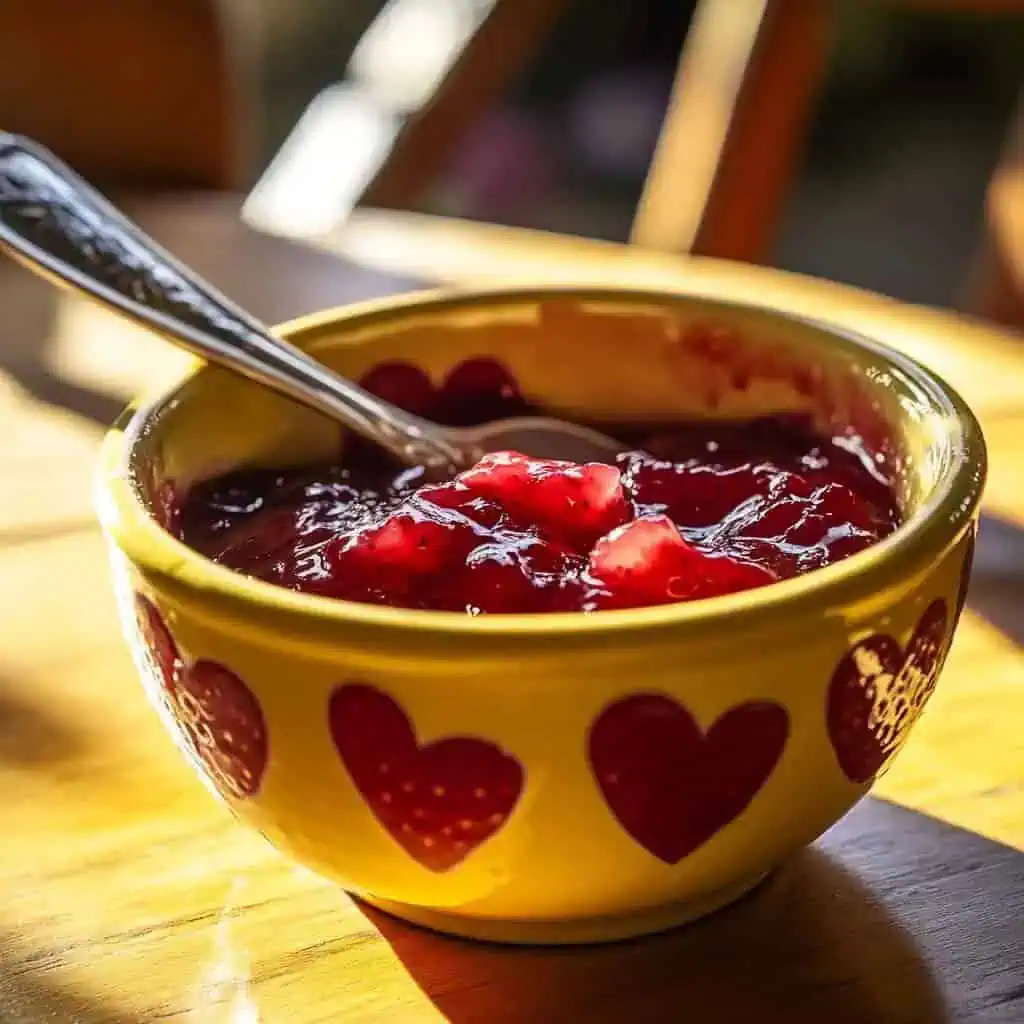
FAQ
Why isn't my jam setting properly?
This could be due to several factors: using overripe strawberries (which have less pectin), not enough acid (lemon juice), or insufficient cooking time. Ensure you're cooking to the proper temperature (105°C/220°F) and using the cold plate test to confirm setting.
Can I reduce the amount of sugar?
While you can reduce sugar by up to 25%, it affects both preservation and texture. Sugar is essential for gel formation and preservation. For significantly lower sugar, consider using a pectin specifically designed for low-sugar recipes.
How do I prevent my jam from burning?
Use a heavy-bottomed pan, keep heat moderate, and stir frequently, especially toward the end of cooking time. Make sure to scrape the bottom of the pan regularly.
Is it normal for my jam to thicken as it cools?
Yes! Jam continues to set as it cools, so it's normal for it to seem a bit loose when hot. This is why the cold plate test is so valuable.
Can I double this recipe?
Yes, but cooking time will increase. For best results, don't make more than double batch at once as it affects cooking efficiency and setting properties.
How can I create variations of this jam?
Try adding vanilla bean, cinnamon, star anise, or a splash of balsamic vinegar during cooking. For a mixed berry version, substitute up to 25% of the strawberries with other berries.
What's the difference between jam and preserves?
This recipe actually falls between the two - jam typically has crushed fruit while preserves contain whole fruit pieces. Our recipe combines both methods for the perfect chunky texture.
Why is my jam foaming during cooking?
Foaming is normal and caused by natural air in the fruit. Simply skim it off with a spoon for a clearer final product.
Related
Looking for other recipes like this? Try these:
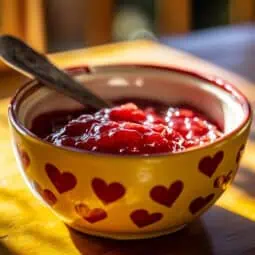
Homemade Baguio-Style Chunky Strawberry Jam
Equipment
- Large mixing bowl (Malaking mangkok) for initial fruit preparation
- Heavy-bottomed saucepan (makapal na kaldero) ensures even heat distribution
- Wooden spoon (kahoy na kutsara) prevents scratching and ideal for stirring
- Potato masher (optional) for crushing strawberries
- Mason jars with lids (mga garapon) for storage
- Canning funnel (optional) helps prevent spills when jarring
- Kitchen thermometer (optional) to check setting temperature
- Sterilized glass jars (nilinis na garapon) for storage
Ingredients
- 1½ kg fresh strawberries sariwang strawberry, tops removed
- 4 cups white sugar puting asukal
- ⅓ cup lemon juice katas ng dayap o lemon
Instructions
- First, wash and sterilize your jars and lids in hot soapy water, then place them in the oven at 160°C (320°F) for 10 minutes and let them cool on clean kitchen towels.
- Clean your strawberries thoroughly under cool running water. Remove the green tops and set aside ½ kg of the nicest whole strawberries for later - this will give your jam that signature chunky texture.
- In a large mixing bowl, combine your sugar, lemon juice, and the remaining 1 kg of strawberries. Using clean hands or a potato masher, gently crush these strawberries until they release their juices, but don't mash them completely - you still want some texture.
- Now add your reserved whole strawberries to the bowl and mix everything together gently. Transfer this entire mixture to a heavy-bottomed saucepan.
- Place your pan over medium-high heat and bring the mixture to a boil, stirring occasionally. Once boiling, lower the heat to medium-low (para hindi sumunog / so it won't burn). Let it simmer for 35-45 minutes, stirring every few minutes to prevent sticking. The jam should reach 105°C (220°F) on a thermometer.
- To test if your jam is ready, place a small spoonful on a cold plate. Let it cool for a minute, then push it gently with your finger. If the surface wrinkles and the jam doesn't run, it's ready. If it's still runny, continue cooking for a few more minutes and test again.
- Once ready, carefully pour the hot jam into your prepared sterilized jars, leaving about ¼ inch of space at the top. Wipe the rims clean with a damp paper towel, then seal the lids tightly.
- Let the jars cool completely at room temperature. You'll hear a satisfying 'pop' sound as each lid seals. Label your jars with the date (lagyan ng petsa), then store them in a cool, dark place or in the refrigerator.
- For the best flavor and texture, let your jam rest for 24 hours before opening. Once opened, keep refrigerated and use within one month. Unopened jars will keep for up to 6 months in a cool, dark place.
Tips from Lola's Kitchen
- Use slightly underripe strawberries for better pectin content
- Don't skip the lemon juice - it helps with preservation and setting
- Stir from the bottom to prevent scorching (haluin mula sa ilalim)
- If foam forms, skim it off for clearer jam
- Label jars with date made
Nutrition
The Story Behind Homemade Baguio-Style Chunky Strawberry Jam
Growing up in the Philippines, there's something magical about the way Baguio City transforms simple strawberries into extraordinary preserves. During my college years in the early 2000s, I discovered the true heart of Philippine strawberry jam-making while staying at a peaceful retreat house nestled in the pine-covered hills. It was here that I met Manang Rosa, a local kitchen matriarch whose hands had been crafting jams for over three decades.
The tradition of strawberry jam-making in Baguio dates back to the American colonial period when the city was established as a hill station in 1909. The cool climate and rich soil of the Cordillera region proved perfect for growing strawberries, turning La Trinidad and its surrounding valleys into the strawberry capital of the Philippines. Local families began preserving their harvests using methods passed down through generations, creating distinctive chunky jams that would become a beloved regional specialty.
What sets Baguio-style strawberry jam apart is its rustic, homemade quality. Unlike mass-produced varieties, this jam maintains the integrity of the fruit, with visible chunks of strawberries suspended in a naturally thickened preserve. The recipe I learned uses just three ingredients - a technique that evolved from the practical wisdom of local preservers who understood that the region's naturally sweet strawberries needed little enhancement.
Today, this jam remains a cherished pasalubong from Baguio City, carried down the mountain in recycled jars and gifted to loved ones. Each spoonful tells a story of morning fog rolling over strawberry fields, of careful hands selecting the ripest berries, and of kitchen windows steamed up from bubbling pots of jam. While commercial versions abound, this homemade recipe preserves not just strawberries, but also the authentic taste of Baguio's culinary heritage.
In my own kitchen now, far from those misty mountains, making this jam connects me to those tranquil mornings at the retreat house. The process remains unchanged - simple, unhurried, and deeply satisfying. As the jam bubbles and thickens, filling my home with its sweet aroma, I'm transported back to Manang Rosa's kitchen, where I first learned that the best recipes are often the simplest ones, carried forward by hands that understand both tradition and love.
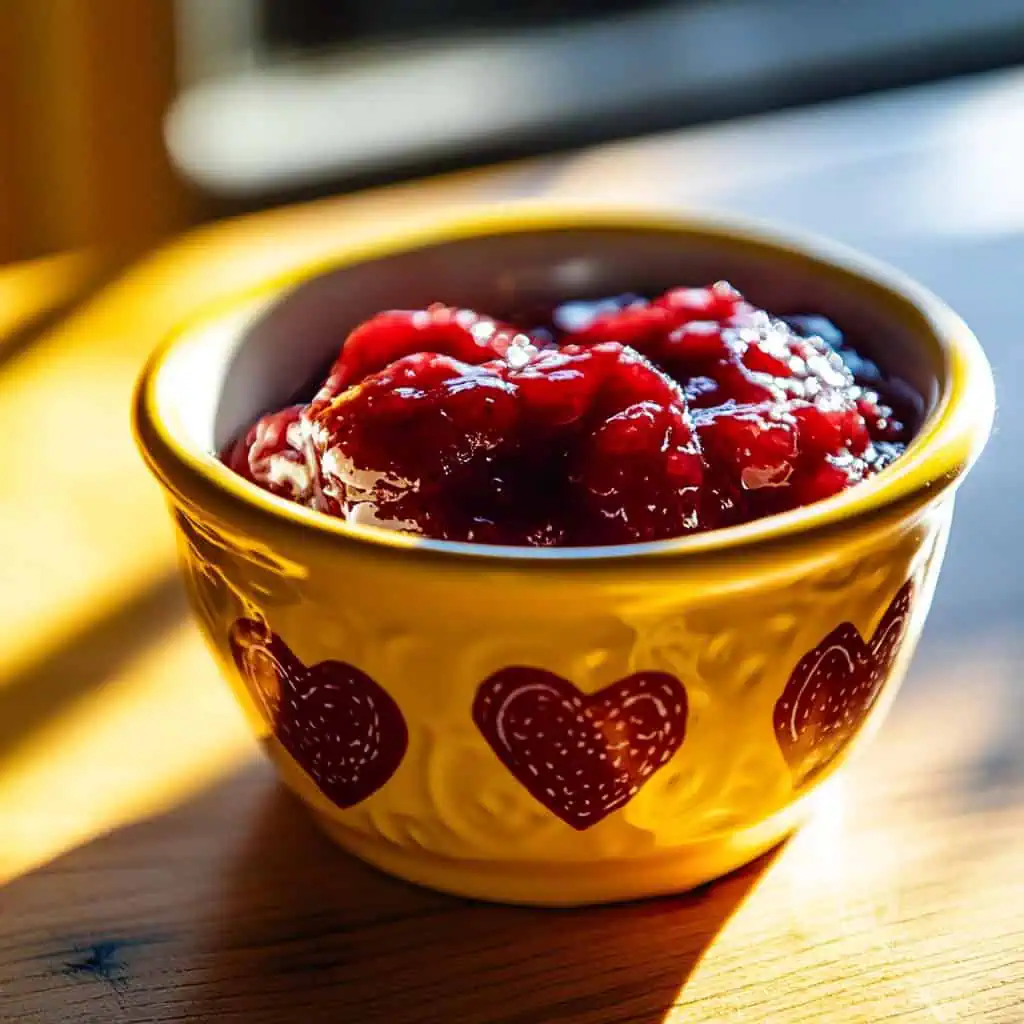






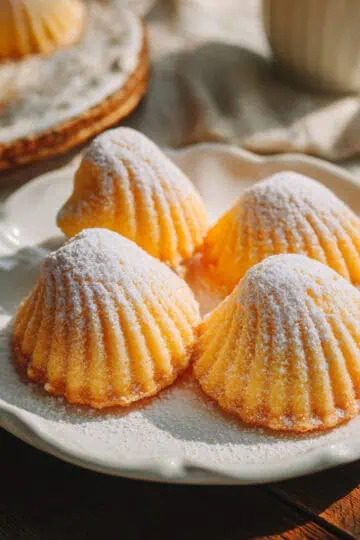
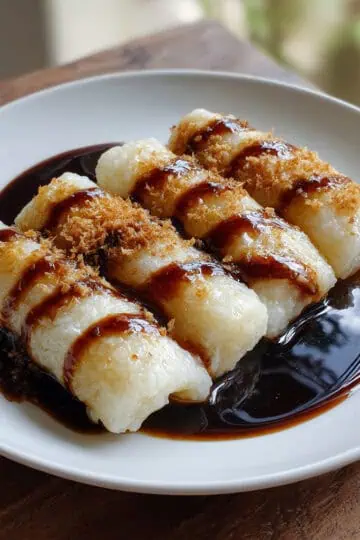
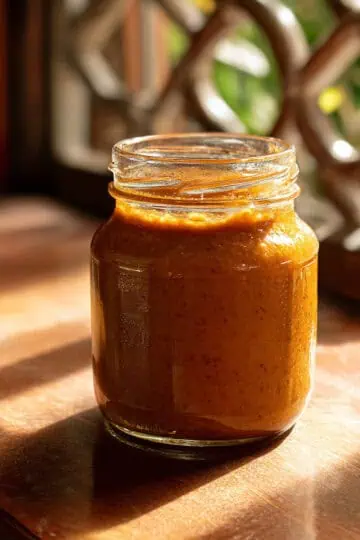
Comments
No Comments